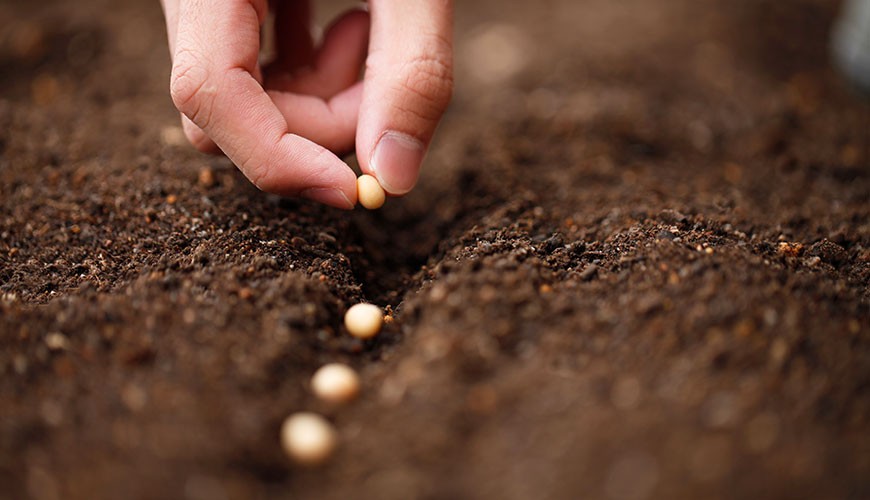All you need to know about the soil and fertilisation of your vegetable garden
 12 lis
12 lis f you wish to have a vegetable garden, start by looking into your soil’s properties and the best fertilisation methods. The type of fertiliser you need depends, amongst other things, on the acidity, or pH-level, of the soil. PH-levels can be determined with a pH-meter. As sub-optimal pH-values can hinder nutrient uptake, we will devote this blog article to the explanation of the various types of soil, and how to fertilise your vegetable garden.
Clay
Clay soil is very fertile and therefore highly suitable for a vegetable garden. However, clay also has its disadvantages. For instance, both in summer and winter, clay is notoriously hard to cultivate. In summer, it may bake to a hard mass, whereas in winter, you might be confronted with a sticky, slippery substance. We would advise you to improve the soil´s structure by using fertiliser.
Fertilisation advice:
To fertilise clay soil, use lime. Make sure to measure the pH-level first, though. This will tell you the exact amount of lime you require. BAC Lime provides a stable pH-value and supplies proper amounts of calcium, which helps to strengthen the plants’ cells.
Additional tips:
- Is the clay soil wet? Then don’t walk across, as it will become even more compacted.
- Working clay soil is best done in autumn or at the beginning of winter, when frost will crumble the clay.
- Don´t use farmyard manure, as this will make the soil more cohesive.
Sulphur
Sulphur is a mixture of sand and clay. This soil is nutrient-rich and retains water reasonably well, rendering sulphur highly fertile and easy to work. Although sulphur is perfect for a vegetable garden, it remains important to fertilise sufficiently, thus encouraging crop growth.
Fertilisation advice:
Fertilise sulphur with organic nutrition. For instance, combine our Bio pellets with BAC Coco soil. To find out whether lime is required, measure the pH-levels.
Additional advice:
- Dig in January.
- Sow early in the year, as sulphur heats up quickly.
Lime-rich soil
Chalky soil has a white or pale, yellowish colour, with small stones in it. It is fertile and has good water balance, making this soil highly suitable for the growing of foods.
Fertilisation advice:
Use organic nutrition on lime-rich soil, for instance, our Bio pellets. Mix these with coco soil to create a symbiosis with high nutritional value.
Sandy soil
Sandy soil isn’t very nutritious and therefore, not very suitable for a vegetable garden. If you wish to start a one, then cover the ground with about 25 centimetres of fertilised garden soil. To keep it fertile, you will need to add soil and fertiliser yearly.
Fertilisation advice:
Use Bio pellets to enrich the soil. To revive it, add lava and coco soil. Lava soil is naturally rich in nutrients. Fertilise in January, to allow the manure time to do its work.
Additional tip:
- Sandy soil heats up relatively fast. In some years, you could start planting various vegetables as early as February.
Peat bog
Peat soil consists to a large degree of dead plant residue, providing it with high pH-levels. So high, the soil is effectively too acid to grow veggies. Furthermore, peat soil can be highly waterlogged and, therefore, swampy. If this is the case, we recommend draining the ground.
Fertilisation advice:
As peat bog is very acidic, use lime to fertilise the soil. After all, lime is acidity’s counterpart. Make sure to mix the lime with coco soil before treatment.
More information
Have you got any questions about the above, or about our products? Feel free to contact us at any time – it is non-binding! We look forward to hearing from you.



